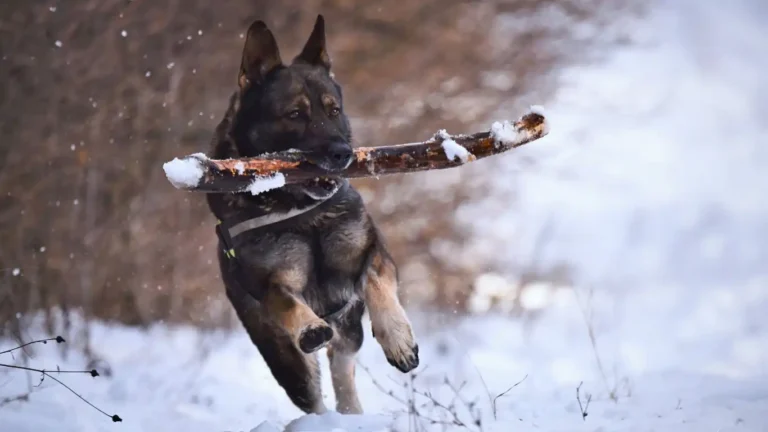How to Tell if Your Dog is in Pain: Key Signs You Can’t Ignore
Ever wondered how to tell if your dog is in pain? It’s not always obvious. Dogs are masters at hiding discomfort, an instinct that dates back to their wild ancestors who avoided showing weakness. As a pet nutritionist and someone who’s spent years working in veterinary clinics, I’ve seen countless cases where loving owners missed the subtle signs of pain in their dogs. Sometimes, it wasn’t until a routine checkup that we uncovered a serious issue. But don’t worry—I’m here to help you spot those hidden signals before things escalate.
Subtle Signs Your Dog Might Be in Pain

Not all pain symptoms scream “emergency!” In fact, many dogs exhibit signs so subtly that they go unnoticed. Here are some key indicators:
1. Changes in Behavior
Dogs have their unique personalities, and any sudden shift in their usual behavior can be a red flag. Based on my experience, pet parents often report things like:
- Uncharacteristic aggression: A normally friendly dog suddenly growling or snapping.
- Increased clinginess: Some dogs become extra attached when they’re unwell.
- Withdrawing: Hiding under furniture or avoiding social interaction.
A Labrador I once treated went from being a happy-go-lucky tail-wagger to sulking in a corner. The culprit? A hidden abscess in his gum! His owner only noticed when he stopped eating kibble.
2. Loss of Appetite
If your pup suddenly turns their nose up at food, pain could be the reason. From dental issues to internal discomfort, loss of appetite is a common symptom of distress. A quick test? Offer their absolute favorite treat. If they refuse, it’s time to investigate further.
3. Changes in Posture & Movement
Pain can make dogs adjust their posture or movements to avoid discomfort. Watch for:
- Stiffness: Struggling to get up or hesitating before jumping on furniture.
- Favoring one side: Limping or avoiding putting weight on a certain leg.
- Arched back or tucked tail: Common signs of abdominal pain.
I once had a senior Golden Retriever patient who developed a hunched posture overnight. Turns out, he had arthritis flare-ups that were making movement painful. After some adjustments to his diet and adding joint supplements, his mobility improved dramatically.
Vocal Clues: When Your Dog Tries to Tell You Something

Dogs may not talk, but they sure have their ways of expressing pain vocally. Some of the most common vocal signs include:
1. Whining or Whimpering
If your dog starts whining more than usual, it could be a cry for help. This is especially true if the whining happens when they move or are touched.
2. Growling When Touched
Even the sweetest dogs may growl if a painful area is disturbed. This isn’t aggression—it’s self-protection.
3. Excessive Barking
Some dogs bark more when in pain, especially if they are feeling anxious or vulnerable.
In my clinic days, I once met a little Dachshund who wouldn’t stop yelping whenever his owner tried to pick him up. A thorough checkup revealed a slipped disc—a common issue in long-bodied breeds. Thankfully, with rest and medication, he made a full recovery.
Physical Signs: What Your Dog’s Body Language Tells You

Dogs are pretty expressive—if you know what to look for. When a pup is in pain, their body language often gives it away. I’ve had clients walk into the clinic, convinced their dog was just “acting weird,” only to find out their furry friend was actually hurting. Here’s what to keep an eye on:
1. Excessive Licking or Chewing
One of the most overlooked signs of pain is constant licking, biting, or chewing at a specific spot. This often means your dog is trying to soothe pain in that area. Common culprits include:
- Joint pain: Dogs with arthritis may obsessively lick their paws or legs.
- Allergic reactions: Skin irritation can cause excessive grooming.
- Hidden injuries: Cuts, burns, or infections might be bothering them.
I once had a senior Cocker Spaniel patient who kept licking her front leg. Her owner assumed it was a harmless habit, but an X-ray revealed early-stage osteoarthritis. With some supplements and lifestyle adjustments, she became much more comfortable.
2. Shivering or Trembling
Unless it’s cold, unexplained shivering can be a sign of discomfort. Pain-related trembling is common in conditions like:
- Joint problems: Older dogs with arthritis often shake in their limbs.
- Internal pain: Stomach issues, pancreatitis, or kidney problems can trigger shivers.
- Stress and anxiety: Pain makes some dogs feel uneasy, causing tremors.
One winter, a client brought in a small Terrier, worried that she was “shivering from the cold.” Turns out, she had a painful urinary tract infection. A simple course of antibiotics fixed her right up.
3. Breathing Changes
Panting isn’t just a response to heat. If your dog is panting excessively—especially at rest—it could mean they’re in pain. Other red flags include:
- Shallow breathing: Dogs in discomfort may avoid deep breaths.
- Grimacing: A tight jaw or wrinkled forehead can accompany labored breathing.
- Hunched posture: Painful breathing can make dogs stand or sit differently.
I remember a sweet Greyhound named Bella who came in for panting and pacing at night. Her owners thought she was just restless, but after a thorough checkup, we discovered she had a painful gastric ulcer.
Activity & Mobility Changes: Why Your Dog’s Routine Matters

Dogs are creatures of habit. If your pup suddenly changes how they move, play, or rest, pain could be the reason. I always tell pet parents: If your dog isn’t acting like their usual self, trust your instincts!
1. Reluctance to Move
Does your pup hesitate before climbing stairs, jumping on the couch, or going for walks? These could be early warning signs of discomfort. Common causes include:
- Hip dysplasia: Large breeds like Labradors and German Shepherds are prone to this.
- Arthritis: Older dogs often develop joint stiffness.
- Muscle strain: Even young, active dogs can pull a muscle during play.
One of my clients had a Border Collie named Max who loved agility courses. One day, he refused to jump over hurdles. A quick vet visit revealed a minor ligament strain, and with rest, he was back to his energetic self.
2. Sleeping More Than Usual
Dogs sleep a lot—but if yours is suddenly snoozing all day and skipping playtime, take note. Pain can make even the most active dogs sluggish.
- Chronic pain: Conditions like arthritis cause fatigue.
- Illness: Infections, digestive issues, and even cancer can lead to increased sleep.
- Mental exhaustion: Pain-related stress can wear dogs out.
One of my clients had a lively Beagle who suddenly preferred naps over walks. After some tests, we found he had an inflamed disc in his spine. With pain management, he was back to sniffing everything in sight!
3. Restlessness & Pacing
On the flip side, some dogs become restless when they’re in pain. If your pup is constantly shifting positions, pacing, or having trouble settling down, consider the following:
- Internal pain: Issues like bloating or kidney stones can cause agitation.
- Joint discomfort: Painful dogs may struggle to find a comfortable position.
- Neurological pain: Conditions like spinal injuries can make dogs uneasy.
One time, a Husky named Luna came in because she was pacing all night. Her owners were exhausted, thinking she just had too much energy. Turns out, she had an undiagnosed ACL injury causing discomfort every time she lay down.
When to See a Vet: Trust Your Gut

If you’ve noticed any of these signs, don’t ignore them. While some minor issues resolve on their own, pain should never be taken lightly. Here’s when to call your vet:
- Pain persists for more than 24-48 hours: If your dog is still uncomfortable after a day or two, it’s time for a checkup.
- Severe symptoms: Sudden yelping, excessive limping, or signs of distress need immediate attention.
- Loss of appetite and energy: If your dog refuses food and seems weak, don’t wait.
I always tell pet parents: You know your dog better than anyone. If something feels off, trust your gut and seek help.
Pain Management: Helping Your Dog Feel Better

Once you’ve identified that your dog is in pain, the next step is finding the best way to help them. Over the years, I’ve seen countless pet parents feel helpless when their furry friend is suffering, but there are many ways to provide relief—whether through veterinary care, home remedies, or lifestyle adjustments.
1. Veterinary Treatments
Always consult a vet before starting any treatment. Some conditions require prescription medications or even surgery. Common veterinary interventions include:
- Pain medication: Nonsteroidal anti-inflammatory drugs (NSAIDs) like carprofen are often prescribed for joint pain.
- Physical therapy: Hydrotherapy and massage can help dogs with arthritis or injuries.
- Acupuncture: This alternative therapy has shown promising results in managing chronic pain.
I once had a senior Labrador patient named Buddy who could barely move due to arthritis. His owners were hesitant about medication, but after a few acupuncture sessions and joint supplements, Buddy was back to enjoying his walks.
2. Home Remedies & Comfort Measures
While professional treatment is crucial, there are also simple things you can do at home to help ease your dog’s pain:
- Provide a cozy rest area: An orthopedic dog bed can relieve pressure on aching joints.
- Use warm or cold compresses: Heat helps with stiffness, while cold packs reduce swelling.
- Maintain a healthy weight: Extra pounds put stress on joints and muscles.
One of my own dogs, a rescue Beagle named Toby, struggled with hip pain. A small change—switching to an orthopedic bed—made a world of difference in his comfort level.
3. Dietary Adjustments for Pain Relief
Nutrition plays a huge role in pain management. Certain foods and supplements can help reduce inflammation and support joint health:
- Omega-3 fatty acids: Found in fish oil, they help reduce joint inflammation.
- Glucosamine and chondroitin: Essential for cartilage repair.
- Turmeric: A natural anti-inflammatory that some vets recommend.
If you’re unsure about the right diet for your dog’s condition, check with your vet or a certified pet nutritionist.
Preventing Pain in Dogs: Proactive Steps for a Happier Life

While some health issues are unavoidable, there are proactive steps you can take to minimize the chances of your dog experiencing pain in the future.
1. Regular Vet Checkups
Many painful conditions—like arthritis, dental disease, and organ problems—develop gradually. Routine checkups help catch issues before they become serious. Aim for:
- Annual wellness exams: Especially important for senior dogs.
- Dental cleanings: Tooth pain is often overlooked but can be severe.
- Bloodwork and X-rays: These can reveal underlying health problems.
Early detection can mean the difference between a minor fix and a major medical issue.
2. Proper Exercise & Joint Care
Keeping your dog active is essential, but not all exercise is created equal. The key is finding the right balance:
- Low-impact activities: Swimming and gentle walks are great for older dogs.
- Avoid overexertion: High-impact jumping and hard surfaces can wear down joints.
- Joint supplements: Start early if your breed is prone to joint issues.
I’ve seen way too many young dogs with early arthritis simply because they were pushed too hard in their puppy years. Moderation is key!
3. Safe Home Environment
Surprisingly, many injuries happen at home. Simple adjustments can prevent accidents:
- Use pet-friendly flooring: Slippery surfaces can lead to falls.
- Ramps and stairs: Great for older dogs who struggle with jumping.
- Supervised play: Prevent roughhousing injuries, especially in puppies.
One of my clients had a small Dachshund who loved jumping off the couch—until he injured his spine. Adding a small ramp made all the difference in preventing further issues.
Final Thoughts: Trust Your Instincts
At the end of the day, you know your dog better than anyone. If something feels off, don’t ignore it. Whether it’s subtle signs of discomfort or a sudden change in behavior, pain should never be brushed aside.
Providing a happy, pain-free life for your furry companion isn’t just about medical treatments—it’s about understanding their needs, making small adjustments, and staying proactive in their health care.
References
Disclaimer
The information in this article is for educational purposes only and should not replace professional veterinary advice. If you suspect your dog is in pain, consult a licensed veterinarian for proper diagnosis and treatment.






